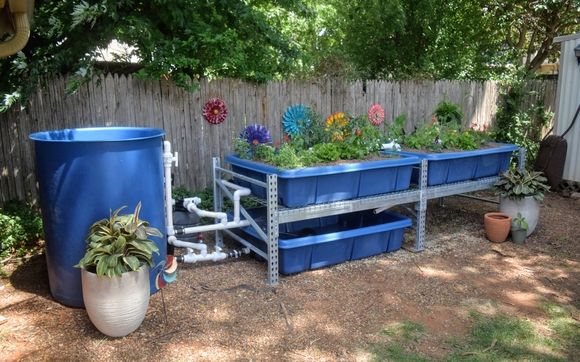First we go through Indoor cultivation. Imagine an aquaponic system located in a room such as a basement, garage or huge hall. This is all referred to as indoor cultivation. The advantage of this method of cultivating plants is isolation from external environmental influences. This means that, regardless of the time of year, the weather or any climatic ailment, we can grow tomatoes in January, for example. It is easier to maintain a constant desired temperature in the room and thus adjust the choice of plants or fish. The premises are even secured from other factors that could endanger production, such as an pests or a human factor in the direction of damage or deterioration of production. However, a major disadvantage is the need for artificial lighting, which, despite the rapidly evolving LED technologies, represents a substantial part of the investment in this direction. Lighting increases energy costs, in cities they may even be undesirable and act as light pollution. It is not only about the lighting, but also the resulting moisture, which can help with the development of fungal diseases. It can even disrupt the structural elements of buildings and thus give chance to appear a mold. Therefore, it is necessary to take into account moisture and the possibility of ventilation during construction. Water also has its substantial weight, 1 liter of water, that is, one kilogram of weight. Therefore, the floor must be adapted to the load of the tanks but also to the water in the system and the structure itself. Indoor cultivation also includes production in a greenhouse, which could be said to include the pros and cons of both methods of cultivation. In a greenhouse, there is the advantage of exposure to sunlight, which serves plants during photosynthesis, but it is also a source of heat that can be accumulated in tanks. The material from which the greenhouse is made also has an effect on many things, such as light transmission, insulation or durability. All these aspects should always be sufficiently considered and, based on the optimum achieved, choose the most correct one for a given production.
Outdoor cultivation could be called cultivation under sky. The advantage is that it can be grown even where the soil is barren or does not occur at all (roofs or parking lots). In our conditions, it is mainly seasonal cultivation, when the system is exposed to the external environment. It is ideal to place the system in partial shade so that any direct sun does not damage the plants. Thanks to seasonal cultivation, there is no need for additional light or heating, but we are limited to choosing crops that grow naturally during the tax season. However, production can be threatened not only by climatic factors such as hail or strong winds, but also by harmful factors such as various diseases or pests. If the system is located in publicly accessible places, it is also possible to count on the theft of production or the system itself.
Each way of placing aquaponics has its pros and cons, it is necessary to determine them right at the beginning by asking simple questions such as: Do I want to grow vegetables all year round, or only seasonally? Do I have a required and suitable place to build a system there?
With questions like these, we can work our way up to the final decision. Then comes the construction process itself.


















